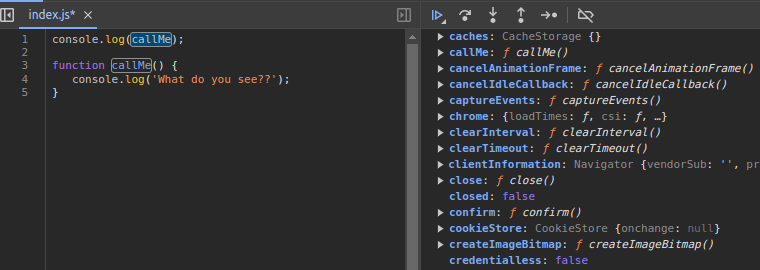The concept of hoisting in JavaScript often serves as a perplexing subject, stirring confusion among developers due to its nuanced behavior. So, get yourself settled, popcorn in hand, as we embark on an enlightening journey to unravel the intricate layers of hoisting in JavaScript.
What is Hoisting?
Hoisting signifies the interpreter treating variable, function, and class declarations as if they're moved to the top of their scope before code execution. Although, during compilation phase, the declarations are actually added to memory (more on this soon!).
Why is hoisting even relevant?
One of the benefits of hoisting is that it allows functions to be safely used in code before they are declared. Sounds fun right? However, using functions before the declaration is not generally recommended because doing so can lead to unexpected errors.
iAmBehindYou(); // I am behind you...🕺
function iAmBehindYou() {
console.log('I am behind you...🕺');
}Before diving deep into hoisting, let's familiarize ourselves with some important concepts.
JavaScript Context Execution
We will briefly discuss JavaScript Context Execution, as it aids in a better understanding of hoisting.
When the browser engine encounters JavaScript code, it creates a special environment to handle the transformation and execution of the code. This environment is known as the Execution Context.
The creation of an Execution Context (GEC or FEC) unfolds in two distinct
phases:
- Creation Phase
- Execution Phase
Creation Phase
During this phase, JS engine execute the following
tasks:
- Creation of the Variable Object (VO or Global Object)
- Creation of the Scope Chain
- Setting the value of the 'this' keyword
- Memory allocation for storing variables and function references
- Storing declarations in memory within the global execution context with an 'undefined' initial value (crucial!!)
Execution Phase
- Variables are assigned with values.
- Functions get executed.
It's important to note that for every function call, the JS engine creates a new Function Execution Context. This context is similar to the global execution context, but creates the arguments object that contains references to all the parameters passed to the function.
Initialization and declaration
Alright, let's dive into how variables hoisting works by breaking down some basics:
Declaration: Involves registering a variable with a designated name within its scope, such as inside a function.
Initialization: When you declare a variable it is automatically initialized, which means memory is allocated for the variable by the JavaScript engine. It's as if the JS engine preps a space for it in memory. Imagine it's like reserving a seat at the table and leaving it empty for now. In JavaScript, this usually means giving it an 'undefined' value until something else is assigned.
Assignment: Now, this is when the action happens! It's like finally putting something on that previously empty seat. This is where you give your variable a real value after it's been set up.

Variables Hosting
In JavaScript, all variables are hoisted and initialized by default with an 'undefined' value, regardless of the actual assigned value. This means you can technically access them before declaration, but they'll return 'undefined':
console.log(iAmVariable); // undefined
var iAmVariable = 'look up☝️';However, this behavior is exclusive to the 'var' keyword. If you attempt to access variables declared using 'let' or 'const' before their declaration, it triggers a ReferenceError due to the Temporal Dead Zone (TDZ):
console.log(iAmInsideTDZ); // Cannot access 'iAmInsideTDZ' before initialization.
const iAmInsideTDZ = 'look up☝️';What is the Temporal dead zone?
The Temporal Dead Zone denotes the
duration during which 'let' and 'const' declarations cannot be accessed.
Functions Hoisting
As previously mentioned, hoisting allows safe access and use of functions before their declaration in code:
youCanCatchMe(); // wow!! You caught me....
function youCanCatchMe() {
console.log('wow!! You caught me....');
}This occurs because during the Creation phase, JavaScript treats the function declaration as an initial value. Contrary to popular belief, it doesn’t physically move the declaration to the top. Instead, the entire function is kept as an initial value during this phase.
console.log(callMe); /*
ƒ callMe() {
console.log('What do you see??');
}
*/
function callMe() {
console.log('What do you see??');
}
Can you guess what would happen if we try to access functions with expressions?
Yes, you guessed it right.
- For var, it will keep undefined and you will get an Error if you try invoke function with a value undefined.
- For let and const will result in a reference Error.
Class Hoisting
Similar to functions, class declarations undergo hoisting. However, a pivotal distinction lies between function and class declarations: functions can be invoked before their definition, whereas classes necessitate definition before instantiation. Attempting to construct a class before its declaration will result in a ReferenceError being thrown.
const bigBoy = new BigBoy(); // Cannot access 'BigBoy' before initialization
class BigBoy {}